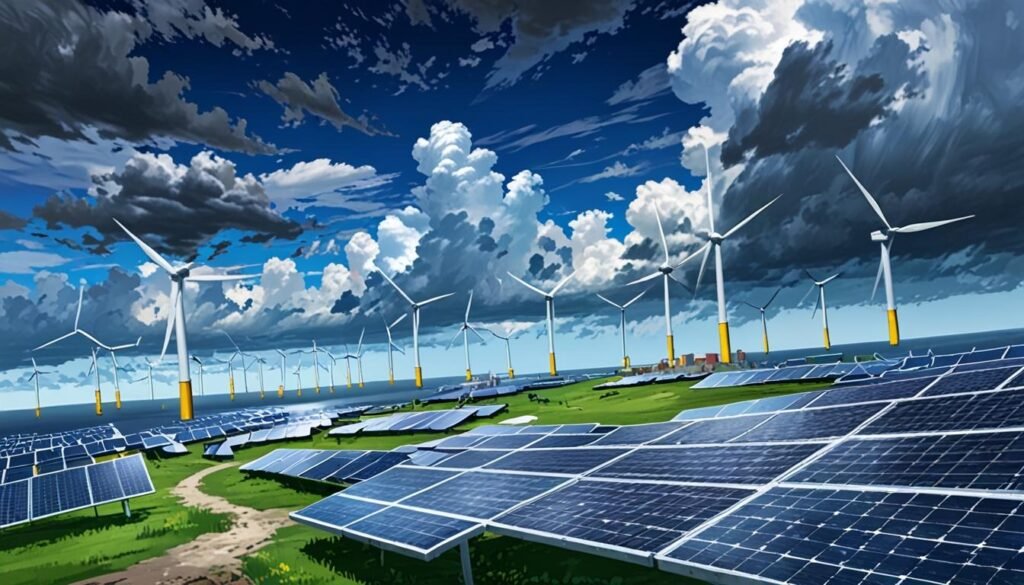**United States**: The US energy sector is navigating uncertainty due to new administration policies impacting tariffs, fossil fuel production, and international supply chains. This creates challenges for clean energy investments, utilities, and infrastructure projects, requiring strategic adaptation to ensure energy security and sustainable growth amid global competition.
The energy sector is currently experiencing considerable upheaval as the United States confronts a shifting economic and policy environment under the new administration. According to Paul A. DeCotis, senior partner for Energy & Utilities at West Monroe, these developments are reshaping market dynamics for clean energy developers, utilities, and investors alike, with implications extending far beyond US borders.
Central to the ongoing changes is the administration’s reassessment of tariffs on critical energy imports and a renewed emphasis on boosting fossil fuel production. This recalibration has introduced heightened uncertainty into the clean energy sector, particularly affecting large-scale infrastructure projects such as offshore wind farms, battery storage systems, and solar arrays—ventures that require long-term capital commitments and benefit from stable regulatory frameworks and supply chains.
Materials vital to these infrastructure projects, including steel for wind turbines and rare earth elements used in batteries, are heavily reliant on international supply networks. As tariff policies and trade tensions fluctuate, these supply chains face increased strain, raising risks of project delays and cost overruns. Investors, contending with potential shifts in tariffs and tax incentives, have reportedly become more cautious, resulting in a slowdown of fresh investments and project initiations.
For utilities tasked with advancing clean energy initiatives, securing financing under these volatile conditions has become increasingly challenging. DeCotis advises industry players to embrace resilient and adaptable funding strategies, diversify supply chains, and focus on scalable, modular projects that remain viable amid fluctuating policies. He notes that “this is a time for patient capital, with investors waiting on the sidelines for greater certainty before committing large sums of money for long lead time projects.” There is also a recommendation for utilities to employ enterprise-wide frameworks to prioritise projects based on their impact on reliability, safety, and affordability for consumers.
The current administration’s focus on energy independence and national security has intensified discussion around expanding domestic fossil fuel production. However, the article underscores that genuine energy security depends on a diverse and sustainable energy mix, which encompasses renewable sources alongside traditional fuels. It points out that the challenge is compounded by rising electricity demand driven by artificial intelligence data centres and efforts to bring manufacturing back onshore, further stressing the US power grid.
Globally, the clean energy transition is accelerating, with countries such as China and members of the European Union investing substantially in renewable infrastructure, smart grid technologies, and energy storage solutions. These international advances are prompting US policymakers and industry stakeholders to reconsider their strategies in response to a rapidly evolving global energy landscape.
A significant concern highlighted is the US’s reliance on global supply chains for critical materials like lithium, cobalt, nickel, and rare earth minerals, which are of strategic importance to clean energy technologies. Currently, domestic production of these materials is insufficient to meet demand. The imposition of trade barriers or withdrawal from international cooperation agreements could exacerbate supply vulnerabilities. DeCotis stresses the need for investment in domestic mining, refining, and manufacturing capacities to reduce dependency on foreign sources and strengthen the resilience of the US clean energy sector.
To navigate this complex and uncertain environment, DeCotis outlines key strategic actions for energy leaders:
-
Secure and diversify funding sources, exploring options such as green bonds and private capital to mitigate risks arising from federal policy changes.
-
Utilise artificial intelligence tools to monitor and interpret evolving regulatory landscapes, enabling proactive risk management.
-
Advocate for sustained, long-term policies that support clean energy objectives to maintain momentum across successive administrations.
-
Reassess and fortify supply chains, fostering domestic manufacturing and strategic partnerships that lessen reliance on international suppliers.
-
Prioritise modular and scalable projects with measurable benefits in reliability, safety, and cost-effectiveness.
DeCotis concludes by emphasising that the US is at a pivotal juncture in its pursuit of clean energy, requiring agility and strategic reassessment by industry stakeholders to build a resilient, sustainable energy system capable of meeting future demands. The successful transition will depend on balancing the immediate imperatives of energy security with long-term sustainability goals within a globally interconnected energy ecosystem.
Source: Noah Wire Services





